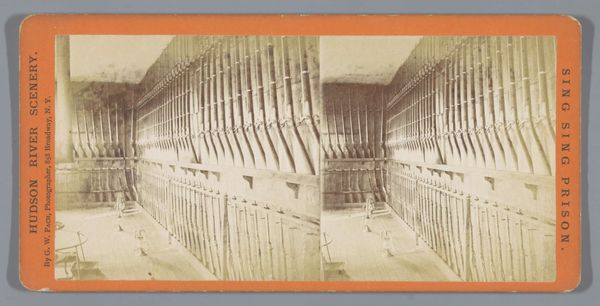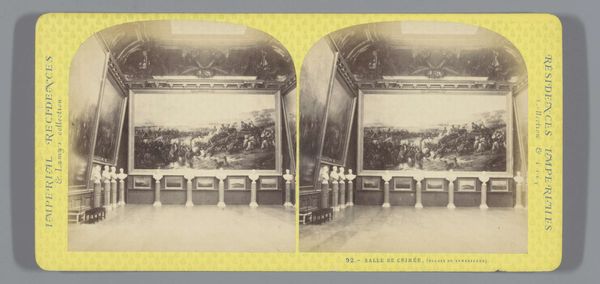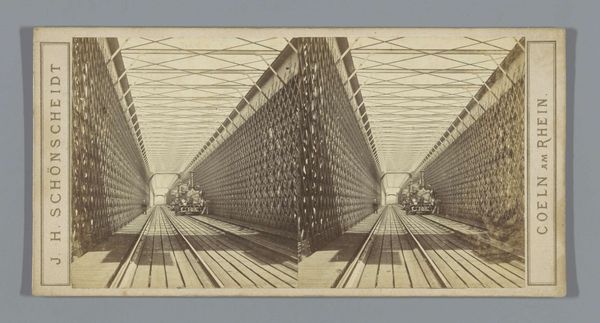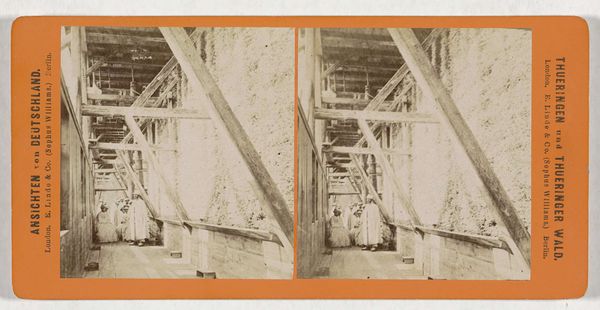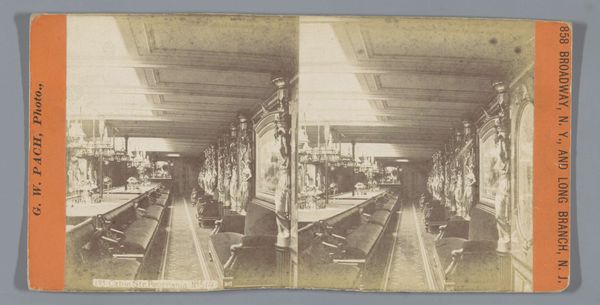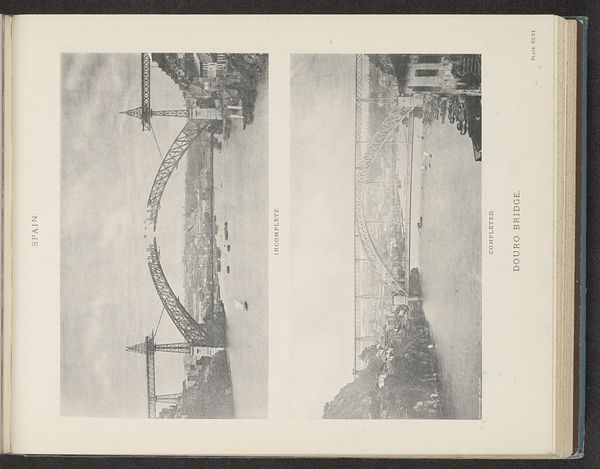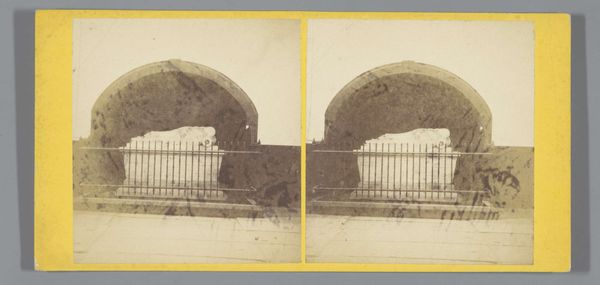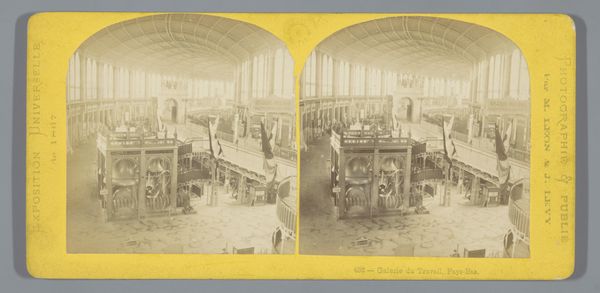
contact-print, photography
#
landscape
#
contact-print
#
photography
#
realism
Dimensions: height 87 mm, width 176 mm
Copyright: Rijks Museum: Open Domain
This stereograph of the Niagara Falls Suspension Bridge was produced by C.L. Pond of Buffalo, New York, sometime in the late nineteenth century. The image gives us a glimpse into the booming tourist industry that grew up around the falls, connecting them to the wider world. The Niagara Suspension Bridge was an engineering marvel, completed in 1855. But it was also a symbolic structure, physically uniting the United States and Canada. Pond’s photograph, produced for mass consumption, plays into this narrative of progress and connection. By offering a view from within the bridge's tunnel-like interior, the image emphasizes the bridge's scale and technological prowess. Signs posted at the entrance point to its commercial function: the bridge offered passage to tourists for a fee. Understanding an image like this depends on research into the history of photography, tourism, and technology in the United States. It’s a reminder that the meaning of art is always contingent on the social conditions of its production and reception.
Comments
No comments
Be the first to comment and join the conversation on the ultimate creative platform.
